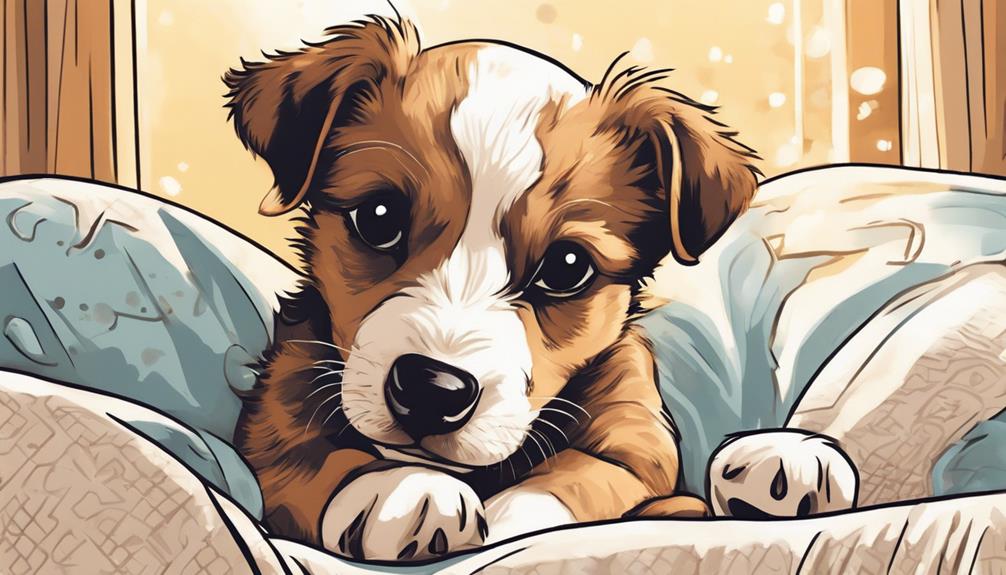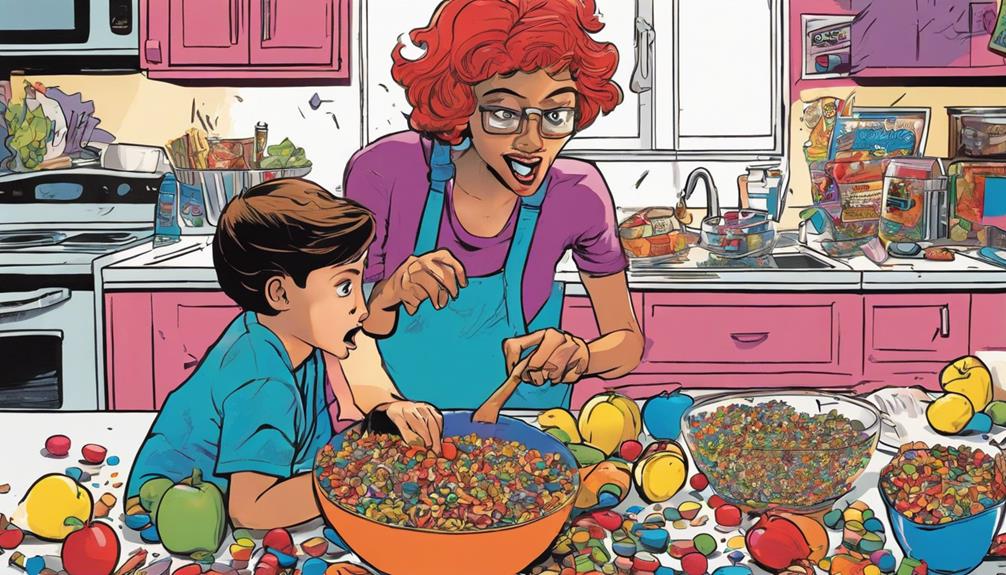Your puppy starts losing baby teeth around 3.5 to 4 months old. The first teeth to go are the incisors, typically falling out between 2 and 5 months. Next, the canine teeth usually come out between 3 and 5 months, followed by the premolars, which shed around 4 to 6 months. This natural process is an important part of their development, and you'll notice signs like increased chewing and drooling. Keeping an eye on this shift helps guarantee their dental health. Want to discover more about caring for your teething puppy?
Key Takeaways
- Puppies lose their baby teeth starting around 3.5 to 4 months of age.
- Incisors are the first baby teeth to be shed, typically between 2-5 months.
- Canine teeth generally fall out between 3-5 months during teething.
- Premolars are usually lost between 4-6 months as adult teeth emerge.
Puppy Teething Timeline

Puppies typically start teething around three weeks old, and by six to eight weeks, they'll have a complete set of 28 baby teeth. During the teething process, your puppy will experience a range of changes as their baby teeth start to fall out. Generally, the timeline for puppy teething varies but falls within specific age ranges.
Around 2-5 months, you'll notice the first puppy teeth—the incisors—beginning to drop. This is followed by the loss of the canine teeth, which typically occurs between 3-5 months. At this point, your puppy's mouth will be a mix of baby teeth and adult teeth.
As the weeks progress into the 4-6 month range, the premolars will start to fall out, making way for the permanent adult teeth.
Order of Baby Teeth Loss

The order in which baby teeth are lost in dogs begins with the incisors, typically shedding first between 2 to 5 months of age.
As a puppy, you'll notice your furry friend starting to lose their teeth in a specific sequence. Understanding this order of baby teeth loss can help you keep track of their dental development.
Here's a quick overview of the order:
- Incisors: Lost first, around 2-5 months old.
- Canines: Follow next, usually between 3-5 months old.
Age When Teeth Fall Out
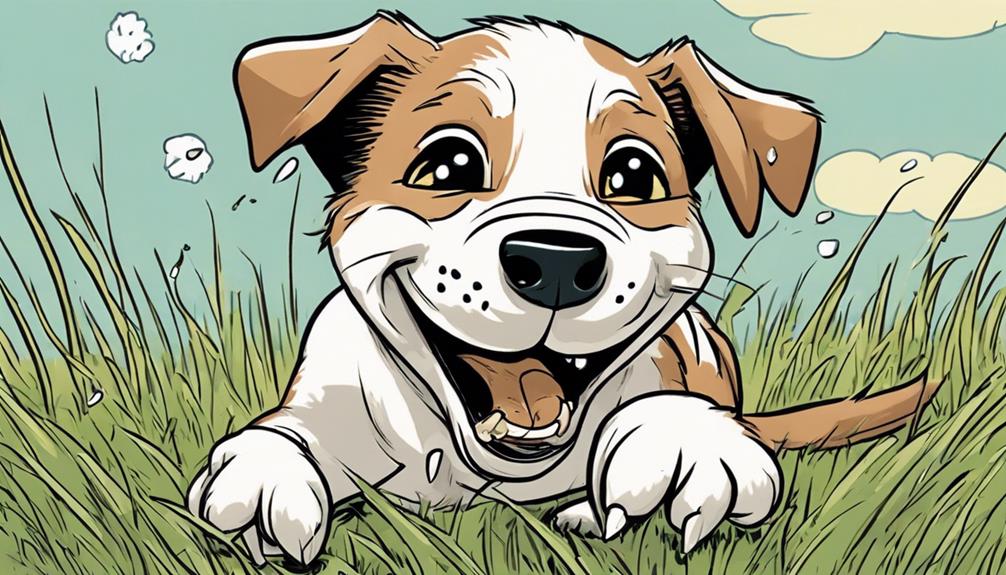
Around 3.5 to 4 months old, your dog starts losing its baby teeth. At this age, you'll notice the first teeth to go are the incisors. These tiny teeth usually fall out between 2 to 5 months, marking the beginning of your puppy's progression to adult teeth.
Following the incisors, the canine baby teeth typically lose their grip between 3 to 5 months. This process is essential for making room for the strong adult canines that will replace them.
As your puppy grows, it will also start to lose its premolars. These teeth generally fall out between 4 to 6 months.
Signs of Teething
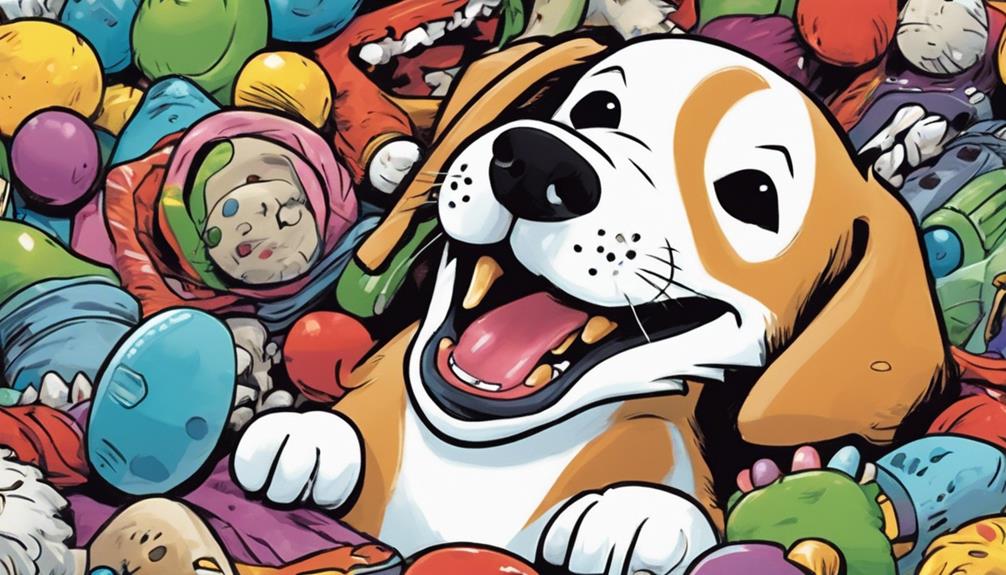
Noticing increased chewing behavior and drooling can signal that your puppy is teething. As your puppy begins to lose its baby teeth, you might observe several signs indicating discomfort. This phase can be challenging for both you and your furry friend.
Here are some common signs of teething:
- Increased Chewing Behavior: Your puppy may chew on everything in sight to alleviate discomfort.
- Drooling: Excessive drooling can occur as your puppy's gums become sensitive.
During this time, it's normal for your puppy to whine or paw at its mouth due to the discomfort associated with teething.
You may also experience some bad breath as baby teeth shift and fall out.
Remember, it's common for puppies to swallow loose baby teeth, making it tricky to track how many they've lost.
Keeping an eye on these signs will help you understand your puppy's teething journey and guarantee you're ready to support them through this natural process.
Caring for Teething Puppies
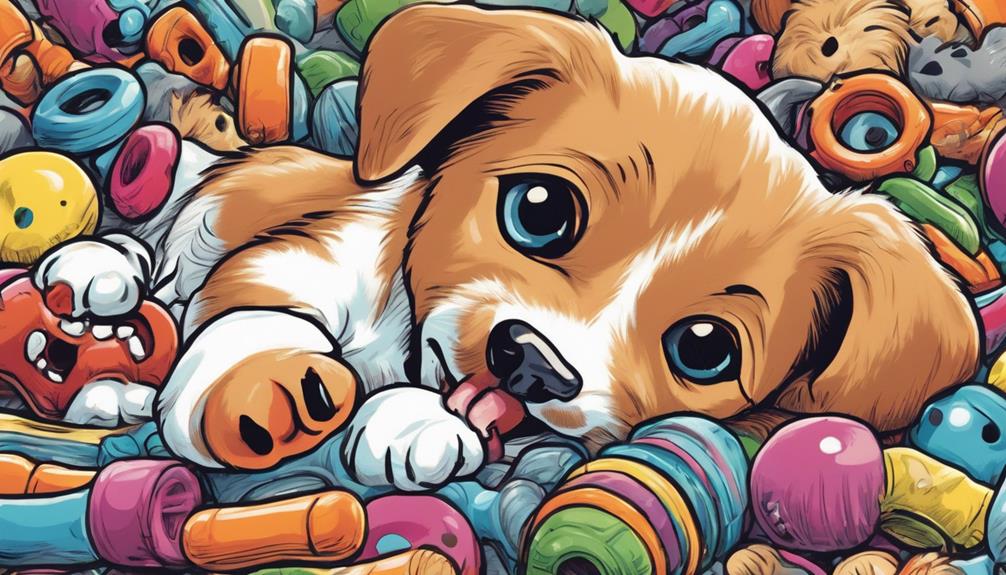
When your puppy starts teething, providing safe chew toys is essential to help manage their discomfort.
You'll want to keep an eye on their chewing habits to guarantee they stick to appropriate items and don't turn to your furniture.
Safe Chew Toys
Choosing safe chew toys is crucial for soothing your teething puppy and preventing them from chewing on inappropriate items. Providing the right chew toys not only alleviates teething pain but also redirects their chewing behavior positively.
Here are some great options:
- Soft rubber toys: These are gentle on your puppy's baby teeth and can withstand aggressive chewing.
- Dental rings: Designed to promote dental health, these help reduce plaque while providing relief from teething discomfort.
Remember to supervise your puppy while they enjoy their chew toys. This guarantees they don't swallow pieces or choke on inappropriate items.
Regularly rotating their chew toys keeps them engaged, which can minimize excessive chewing on furniture or other household items.
Teething Symptoms Management
Caring for a teething puppy involves recognizing their discomfort and providing effective relief through various soothing methods.
As your puppy starts to lose their baby teeth, you'll notice teething symptoms like increased chewing behavior. This is completely normal, but it can lead to destructive habits if not properly managed.
To help soothe sore gums, offer a variety of safe chew toys, such as soft rubber toys or even frozen options. These can provide comfort and distraction. When you notice your puppy engaging in inappropriate chewing, use redirection to guide them toward their designated toys.
Regular cuddles and emotional support can also alleviate some of their discomfort, creating a comforting environment.
It's important to monitor signs of pain or excessive discomfort. If your puppy seems particularly distressed or you notice any severe issues, don't hesitate to consult a veterinarian for guidance.
Common Dental Issues

When your puppy's baby teeth don't fall out as they should, it can lead to retained deciduous teeth, which might cause painful malocclusion.
This issue is especially common in smaller and brachycephalic breeds, increasing the risk of periodontal disease due to trapped food.
Regular veterinary check-ups are essential to catch these dental problems early and maintain your pup's oral health.
Retained Deciduous Teeth
Retained deciduous teeth can cause significant dental issues in dogs, particularly when baby teeth fail to fall out as permanent ones come in. This problem often affects smaller breeds and brachycephalic breeds, where space constraints hinder proper tooth loss.
When baby teeth remain, they can lead to various complications, including:
- Malocclusion, which can cause discomfort and difficulty eating.
- Trapping of food and plaque, increasing the risk of periodontal disease.
It's important to monitor your puppy's dental development closely. If retained deciduous teeth persist for months, they can negatively impact your dog's overall dental health.
In many cases, veterinary intervention is necessary to extract these stubborn baby teeth, especially if they obstruct the growth or alignment of adult teeth.
Being proactive about your dog's dental health can save you from more severe issues down the line. Regular check-ups with your veterinarian can help guarantee that your dog has a healthy mouth, allowing for a happier and more comfortable life.
Periodontal Disease Risks
Periodontal disease is a prevalent dental issue in dogs that can lead to serious health complications if left untreated. As a dog owner, it's essential to be aware that plaque buildup can cause inflammation and infection of your pup's gums, impacting their overall health.
Puppies are particularly susceptible, especially if they've retained deciduous teeth, as these can trap food and bacteria, worsening dental problems. Small and brachycephalic breeds are at an even higher risk due to their unique dental anatomy.
You might notice signs of periodontal disease such as bad breath, swollen gums, or difficulty eating. If you see these symptoms, it's important to seek veterinary intervention.
Preventing periodontal disease starts with regular dental cleanings and diligent at-home care, like tooth brushing. Maintaining your dog's oral health is fundamental for preventing plaque buildup and ensuring their teeth remain healthy.
Don't wait for obvious signs of dental issues; be proactive about your dog's dental care to keep their smile bright and healthy. Remember, your commitment to their oral hygiene can greatly impact their quality of life.
Safe Chewing Practices
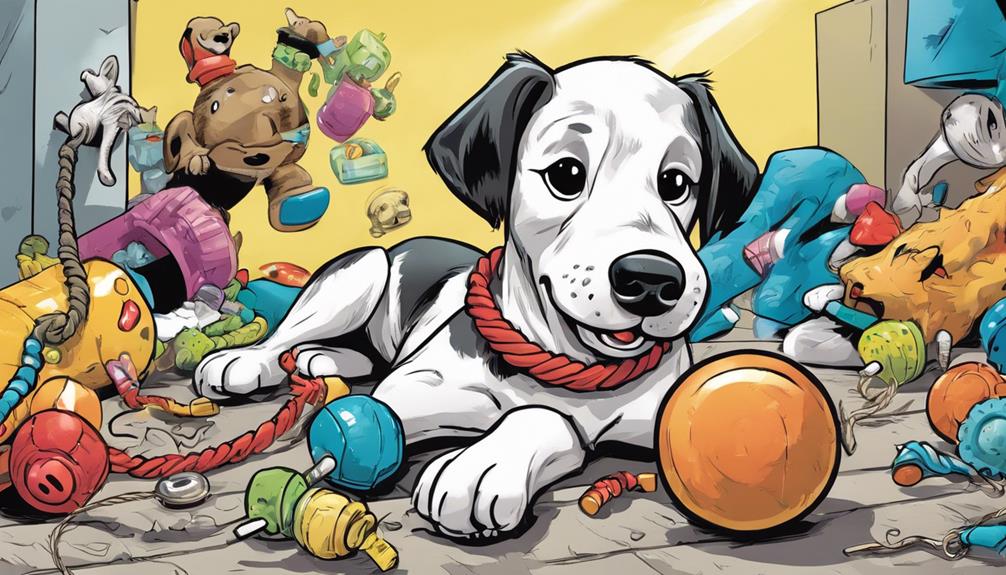
To guarantee your puppy's safety and dental health, provide a variety of appropriate chew toys designed for teething. Implementing safe chewing practices helps prevent dental injuries and supports your puppy's developing teeth. Choose soft rubber toys and dental rings that are gentle on sore gums.
Consider these tips to enhance your puppy's chewing experience:
- Rotate chew toys regularly to keep their interest alive.
- Supervise your puppy during playtime to make sure they don't swallow small or broken pieces.
Avoid hard objects like bones or nylon toys, as they can fracture puppy teeth and lead to painful dental injuries.
By providing the right chew toys and maintaining supervision, you can help your puppy navigate the teething process safely. This approach not only promotes dental health but also keeps your furry friend engaged and happy during this vital stage of their development.
When to Consult a Vet
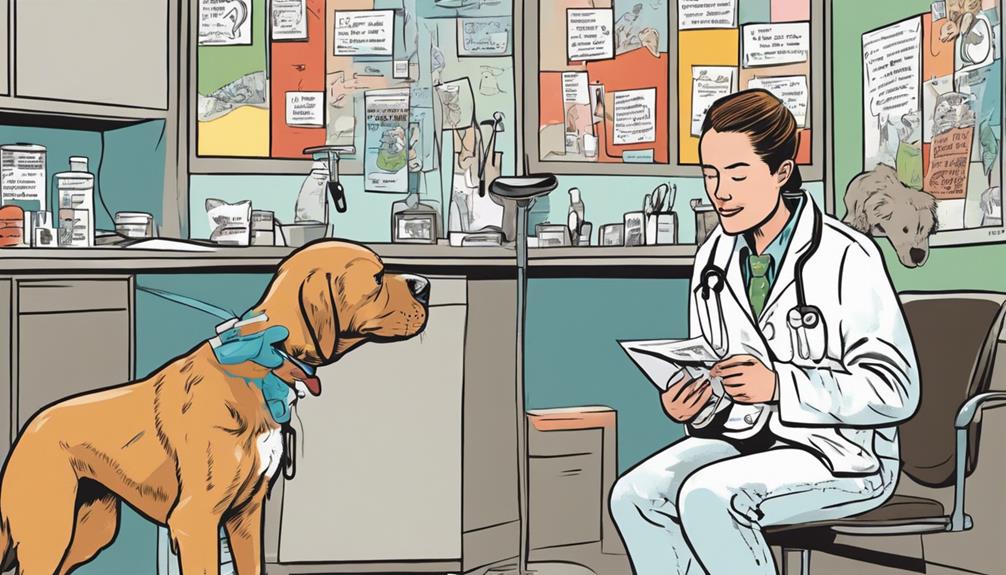
If your puppy hasn't started losing baby teeth by 4-5 months of age, it's important to consult a veterinarian, as this could indicate underlying dental issues. Delayed tooth loss can lead to complications that may affect your puppy's overall health.
Watch for signs of excessive discomfort during teething, such as whining or pawing at the mouth. If your puppy seems unusually distressed, a vet visit is essential to rule out any serious dental problems. Additionally, if you notice retained deciduous teeth, these can cause malocclusion, leading to further dental issues down the line.
Keep an eye out for any signs of infection or delayed tooth loss beyond 8 months. If you observe these symptoms, consulting your veterinarian promptly can help prevent complications. Also, if your puppy exhibits severe behavioral changes or persistent chewing that results in damage to their mouth, it's wise to seek professional guidance.
Early intervention can make a significant difference in your puppy's dental health, so don't hesitate to reach out to your vet if you have concerns about their teething process. Your puppy's well-being is worth it!
Frequently Asked Questions
In What Order Do Dogs Lose Baby Teeth?
You'll notice that your puppy loses baby incisors first, followed by canines, and then premolars. This process usually starts around 2 months and wraps up by 6 months, leaving behind their adult teeth.
Which Puppy Teeth Are the Last to Fall Out?
As your puppy's pearly whites commence on their farewell tour, you'll notice the premolars linger the longest, typically saying goodbye between 4-6 months. Keep an eye out for any stubborn teeth that might stick around!
Do 4 Month Old Puppies Lose Their Teeth?
Yes, your 4-month-old puppy's likely losing teeth. As adult teeth emerge, he's probably shedding baby incisors first. This teething phase is normal, so expect to see some teeth fall out during this time.
What Do Dog Baby Teeth Look Like When They Fall Out?
When your puppy's baby teeth fall out, they look like tiny, sharp white needles—almost like miniature daggers! You might find them on toys or around the house, often leaving slightly red, sensitive gums behind.
Is it Normal for Dogs to Lose Baby Teeth?
Yes, it is normal for dogs to lose baby teeth, just like humans. Around the age of 4-6 months, dogs start to lose their baby teeth, which will be replaced by adult teeth. During this time, it is important to monitor which baby teeth you lose to ensure proper dental care for your furry friend. Puppies losing baby teeth is a natural part of their development and should not cause concern. However, it is important to keep an eye on their gums and oral health during this transition period. Providing appropriate chew toys and regular teeth cleanings can help manage any discomfort and promote healthy oral hygiene as their adult teeth come in.
Conclusion
In summary, managing your puppy's teething journey can feel like maneuvering through a wild jungle of tiny teeth and chew toys!
Remember, it's completely normal for your pup to lose their baby teeth, usually around six months old.
Keep an eye out for signs of discomfort and provide safe chewing options to ease the process.
If you notice any concerning symptoms, don't hesitate to consult your vet.
With a little care, your furry friend will emerge with a healthy adult smile!
